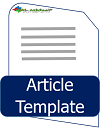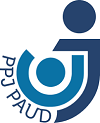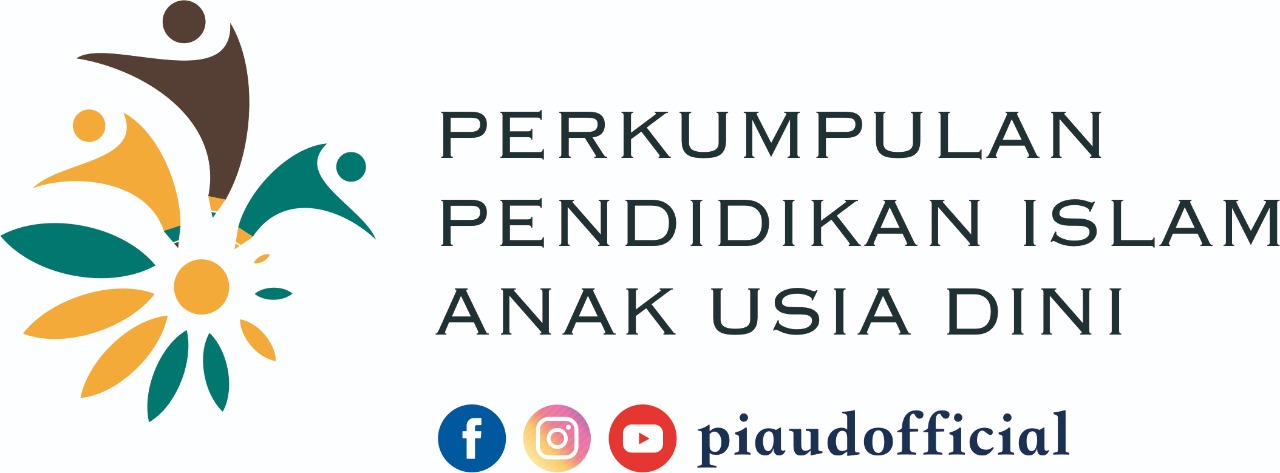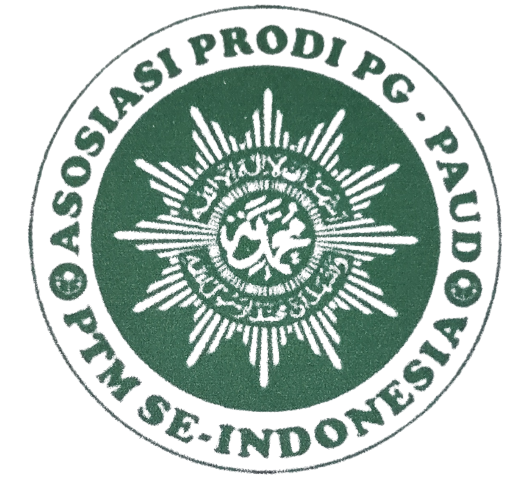Analysis of validity, practicality, and readability of islamic STEAM activity storybook for early childhood
Abstract
So far, separating science and religion has brought the world into chaos. In contrast, science and religion do not need to be a dichotomy because they can be integrated constructively to solve problems in human life. This study aims to analyze the validity, practicality, and readability of Islamic Science, Technology, Engineering, Art, and Mathematics (STEAM) Activities for Early Childhood (AUD), which is part of design research. The research approach uses quantitative methods with a design that refers to the Plomp model. The results of the validity test show that the resulting product is very valid with improvements in standard and non-standard language, use of fonts, enlargement of font sizes, and improvements in Higher Order Thinking Skills (HOTS) questions. After going through the improvement of the prototype, readability, and practicality tests, the results were very good and suitable for use. The results and steps of this study can be used as a reference for other researchers who want to test the validity, practicality, and readability of reading product development for early childhood. In this STEAM Storybook product, more emphasis is placed on integrating Islamic content and activities with the Engineering Design Process.
Keywords
Full Text:
PDFReferences
Adriyawati, E. U., Rahmawati, Y., & Mardiah, A. (2020). Steam-project-based learning integration to improve elementary school students’ scientific literacy on alternative energy learning. Universal Journal of Educational Research, 8(5), 1863–1873.
Agustin, S. D. (2021). Nilai kebenaran (truth value) dalam tafsir salman: telaah interpretasi qs al-alaq [96]: 15-16 Perspektif Jorge JE Gracia. An-Nida’, 45(1), 22–45.
Alabi, H. I., Bello, G., Ahmed, A. R., Bello, Z. A., Sulaiman, M. M., Imam, B. T., & Bello, R. A. (2019). The roles of steam teacher education in the emerging e-society and sustainable development goals.
Barber, A., Adams, M., Williams, D., & Stier, S. (2020). Steam into literacy: introducing complex steam concepts with storybooks in early childhood and elementary teacher education. EdMedia+ Innovate Learning, 376–381.
Bartgis, J., Thomas, D. G., Lefler, E. K., & Hartung, C. M. (2008). The development of attention and response inhibition in early childhood. Infant and Child Development, 17(5), 491–502.
Bashooir, K., & Supahar, S. (2018). Validitas dan reliabilitas instrumen asesmen kinerja literasi sains pelajaran fisika berbasis STEM. Jurnal Penelitian Dan Evaluasi Pendidikan, 22(2), 219–230.
Beauchat, K. A., Blamey, K. L., & Walpole, S. (2009). Building preschool children’s language and literacy one storybook at a time. The Reading Teacher, 63(1), 26–39.
Budiarti, E. (2022). Menumbuhkan literasi melalui permainan tradisional berbasis steam pada anak usia dini. Prosiding Seminar Nasional PGPAUD UPI Kampus Purwakarta, 1(1), 141–146.
Cunningham, C. M., Lachapelle, C. P., & Davis, M. E. (2018). Engineering concepts, practices, and trajectories for early childhood education. In Early engineering learning (pp. 135–174). Springer.
Edwards, D., & Potts, A. (2008). What is literacy? Thirty years of australian literacy debates (1975--2005). Paedagogica Historica, 44(1–2), 123–135.
EiE. (2021). Why EiE? https://www.eie.org/why-eie
Fuadi, S. I., & others. (2022). Pembelajaran cinta lingkungan berbasis sistem merdeka untuk membentuk profil pancasila siswa paud. Muróbbi: Jurnal Ilmu Pendidikan, 6(1), 19–43.
Gandi, A. S. K., Haryani, S., & Setiawan, D. (2019). The effect of project-based learning integrated STEM toward critical thinking skill. Journal of Primary Education, 8(7), 18–23.
Håland, A., Hoem, T. F., & McTigue, E. M. (2021). The quantity and quality of teachers’ self-perceptions of read-aloud practices in Norwegian first grade classrooms. Early Childhood Education Journal, 49(1), 1–14.
Hidayatullah, S. (2018). Relasi agama dan sains dalam pandangan mehdi golshani. Jurnal Filsafat, 27(1), 65–90.
Hodson, D. (2014). Learning science, learning about science, doing science: Different goals demand different learning methods. International Journal of Science Education, 36(15), 2534–2553.
Hsiao, P.-W., & Su, C.-H. (2021). A study on the impact of STEAM education for sustainable development courses and its effects on student motivation and learning. Sustainability, 13(7), 3772.
ITB, T. T. I. S. (2014). Tafsir Salman: Tafsir Ilmiah Juz ‘Amma. AlMizan.
Kelana, J. B., Firdaus, A. R., Wardani, D. S., Altaftazani, D. H., & Rahayu, G. D. S. (2020). Mathematics learning in elementary school through engineering design process method with STEM approach. Journal of Physics: Conference Series, 1657(1), 12044.
Koyuncu, .Ilhan, & Firat, T. (2020). Investigating reading literacy in PISA 2018 assessment. International Electronic Journal of Elementary Education, 13(2), 263–275.
Kurniawati, K. (2021). Analisis validitas isi instrumen tes berpikir kritis ips kelas v sd kota yogyakarta. Pelita: Jurnal Penelitian Dan Karya Ilmiah, 21(1), 130–140.
Kusumaningrum, K., & Wahyono, S. B. (2019). Developing a pop-up storybook based on multicultural education for early childhood students. Jurnal Obsesi: Jurnal Pendidikan Anak Usia Dini, 4(1), 41–49.
Lin, K.-Y., Wu, Y.-T., Hsu, Y.-T., & Williams, P. J. (2021). Effects of infusing the engineering design process into STEM project-based learning to develop preservice technology teachers’ engineering design thinking. International Journal of STEM Education, 8(1), 1–15.
Lottero-Perdue, P., Bowditch, M., Kagan, M., Robinson-Cheek, L., Webb, T., Meller, M., & Nosek, T. (2016a). An engineering design process for early childhood: Trying (again) to engineer an egg package. Science and Children, 54(3), 70.
Lottero-Perdue, P., Bowditch, M., Kagan, M., Robinson-Cheek, L., Webb, T., Meller, M., & Nosek, T. (2016b). Engineering encounters: an engineering design process for early childhood. Science and Children, 54(3), 70–77.
Machado, J. M. (2015). Early childhood experiences in language arts: Early literacy. Cengage Learning.
Maharani, R. H., & others. (2020). Rancangan model pembelajaran berbasis stem (science, technology, engineering and mathematics) terintegrasi dengan pendidikan karakter dalam peningkatan berpikir kreatif melalui media buku cerita (Studi di Taman Kanak-Kanak SPK Nehru Memorial School Bandun. Universitas Pasundan.
Malone, K. L., Tiarani, V., Irving, K. E., Kajfez, R., Lin, H., Giasi, T., & Edmiston, B. W. (2018). Engineering design challenges in early childhood education: effects on student cognition and interest. European Journal of STEM Education, 3(3), 11.
Metafisika, K., Azizah, R. N., & Fitriyah, F. K. (2022). The the development process of islamic STEAM activity storybooks for early childhood. Child Education Journal, 4(1), 1–12.
Muchlisin, A. R., & Nisa, K. (2017). Geliat Tafsir ‘Ilmi di Indonesia dari Tafsir Al-Nur hingga Tafsir Salman. Millati: Journal of Islamic Studies and Humanities, 2(2), 239–257.
Neumann, M. M. (2020). Teacher scaffolding of preschoolers’ shared reading with a storybook app and a printed book. Journal of Research in Childhood Education, 34(3), 367–384.
Nipriansyah, N., Sasongko, R. N., Kristiawan, M., Susanto, E., & Hasanah, P. F. A. (2021). Increase creativity and imagination children through learning science, technologic, engineering, art and mathematic with loose parts media. Al-Athfaal: Jurnal Ilmiah Pendidikan Anak Usia Dini, 4(1), 77–89.
Nirmalasari, P., Jumadi, J., & Ekayanti, A. (2021). Penerapan model pembelajaran STEAM (scienci, technology, engineering, art and math) untuk penguatan literasi-numerasi siswa. Penerapan Model Pembelajaran STEAM (Scienci, Technology, Engineering, Art and Math) Untuk Penguatan Literasi-Numerasi Siswa, 1(2), 89–96.
Perignat, E., & Katz-Buonincontro, J. (2019). STEAM in practice and research: An integrative literature review. Thinking Skills and Creativity, 31, 31–43.
Permanasari, A. (2016). STEM education: Inovasi dalam pembelajaran sains. Prosiding SNPS (Seminar Nasional Pendidikan Sains), 3, 23–34.
Plomp, T. (SLO), & Nieveen, N. (SLO). (2013). Educational design research educational design research. Educational Design Research, 1–206.
Prastyo, D., Kumalasari, T., Samsiah, S., & Lebar, S. (2021). Implementasi 4 c dalam pendidikan pancasila berbasis steam. Jce (Journal of Childhood Education), 5(1), 49–59.
RAHAYUNINGSIH, F. (2021). Internalisasi filosofi pendidikan ki hajar dewantara dalam mewujudkan profil pelajar pancasila. SOCIAL: Jurnal Inovasi Pendidikan IPS, 1(3), 177–187.
Rello, L., Pielot, M., & Marcos, M.-C. (2016). Make it big! The effect of font size and line spacing on online readability. Proceedings of the 2016 CHI Conference on Human Factors in Computing Systems, 3637–3648.
Rhodes, I. A. (2019). StoryTime STEM: Folk & Fairy Tales 10 Favorite Stories with Hands-On Investigations. Scholastic.
Rifenta, F. (2019). Konsep pemikiran Mehdi Golshani terhadap sains Islam dan modern. Kalimah: Jurnal Studi Agama Dan Pemikiran Islam, 17(2), 23–24.
Rivera, T., & Allman, B. (2018). Smart Start STEM Kindergarten. Evan Moor.
Rochmad, R. (2012). Desain model pengembangan perangkat pembelajaran matematika. Kreano, Jurnal Matematika Kreatif-Inovatif, 3(1), 59–72.
Sabella, R. A., Poynton, T. A., & Isaacs, M. L. (2010). School counselors perceived importance of counseling technology competencies. Computers in Human Behavior, 26(4), 609–617. https://doi.org/10.1016/j.chb.2009.12.014
Saracho, O. N., & Spodek, B. (2010). Parents and children engaging in storybook reading. Early Child Development and Care, 180(10), 1379–1389.
Sari, P. N., Ekayanti, A., & others. (2021). Penerapan model pembelajaran steam (science, technology, engineering, art, and math) untuk penguatan literasi-numerasi siswa. Jurnal Abdimas Indonesia, 1(2), 89–96.
Savva, M., Higgins, S., & Beckmann, N. (2022). Meta-analysis examining the effects of electronic storybooks on language and literacy outcomes for children in grades Pre-K to grade 2. Journal of Computer Assisted Learning, 38(2), 526–564.
Siantajani, Y. (2019). Buku Cerita PAUD Serial STEAM: Batu dan Bambu. Sarang 100 Aksara.
Simoncini, K. (2017). Guide to the Early Childhood STEM Habits of Mind. University of Canberra. https://serc.edu.au/wp-content/uploads/2019/10/Vic-Ed-STEM-ECStem-Habit-Booklet-070419-1.pdf
Suryawati, E. A., & Akkas, M. (2021). Panduan Guru: Literasi dan STEAM PAUD. Pusat kurikulum dan perbukuan badan penelitian dan pengembangan dan perbukuan kementerian pendidikan, kebudayaan, riset, dan teknologi.
Syahmani, S., Hafizah, E., Sauqina, S., Adnan, M. Bin, & Ibrahim, M. H. (2021). STEAM approach to improve environmental education innovation and literacy in waste management: Bibliometric research. Indonesian Journal on Learning and Advanced Education (IJOLAE), 3(2), 130–141.
Syarif, Z. (2018). Dinamisasi Manajemen Pendidikan Pesantren; Dari Tradisional Hingga Modern (Vol. 2). Duta Media Publishing.
Taylor, P. C. (2016). Why is a STEAM curriculum perspective crucial to the 21st century? https://researchrepository.murdoch.edu.au/id/eprint/37950/1/STEAM.pdf
Thoyib, M. (2013). Model Integrasi Sains dan Agama dalam Perspektif JF Haught dan M. Golshani: Landasan Filosofis bagi Penguatan PTAI di Indonesia. AKADEMIKA: Jurnal Pemikiran Islam, 18(1), 1–28.
Torr, J. (2019). Infants’ Experiences of shared reading with their educators in early childhood education and care centres: An observational study. Early Childhood Education Journal, 47(5), 519–529.
Ursa, A., & others. (2018). Storybooks as a way to improve language and cultural literacy. Philologica Jassyensia, 14(1 (27)), 255–265.
Utari, R., Andayani, Y., Savalas, L. R. T., & Anwar, Y. A. S. (2021). Validity of Ethnoscience Based Chemistry Learning Media Emphasizing Character Values and Conservation Behavior. Jurnal Penelitian Pendidikan IPA, 7(1), 45–48.
Waldron, C. H. (2018). “Dream more, learn more, care more, and be more”: the imagination library influencing storybook reading and early literacy. Reading Psychology, 39(7), 711–728.
Walsiyam, W. (2021). Implementasi Pendidikan Karakter Pelajar Pancasila Melalui Pembelajaran Berbasis STEAM di SDIT Lukmanul Hakim Puring Kebumen. Prosiding Seminar Nasional Manajemen Pendidikan, 2(1).
Yang, C., Huang, T. S.-T., & Shanks, D. R. (2018). Perceptual fluency affects judgments of learning: The font size effect. Journal of Memory and Language, 99, 99–110.
Yuniarti, N., Siskandar, S., Shunhaji, A., & Suwandana, E. (2021). Memahami konsep pembentukan dan pendidikan karakter anak usia dini menurut agama islam, pakar pendidikan, dan negara. Al-Athfaal: Jurnal Ilmiah Pendidikan Anak Usia Dini, 4(2), 263–280.
DOI: http://dx.doi.org/10.24042/ajipaud.v5i1.11964
Refbacks
- There are currently no refbacks.
Copyright (c) 2022 Al-Athfaal: Jurnal Ilmiah Pendidikan Anak Usia Dini
License URL: https://creativecommons.org/licenses/by-sa/4.0
 All publications by Al-Athfaal: Jurnal Ilmiah Pendidikan Anak Usia Dini [p-ISSN: 2622-5484, e-ISSN: 2622-5182] are licensed under a Creative Commons Attribution-ShareAlike 4.0 International License.
All publications by Al-Athfaal: Jurnal Ilmiah Pendidikan Anak Usia Dini [p-ISSN: 2622-5484, e-ISSN: 2622-5182] are licensed under a Creative Commons Attribution-ShareAlike 4.0 International License.













